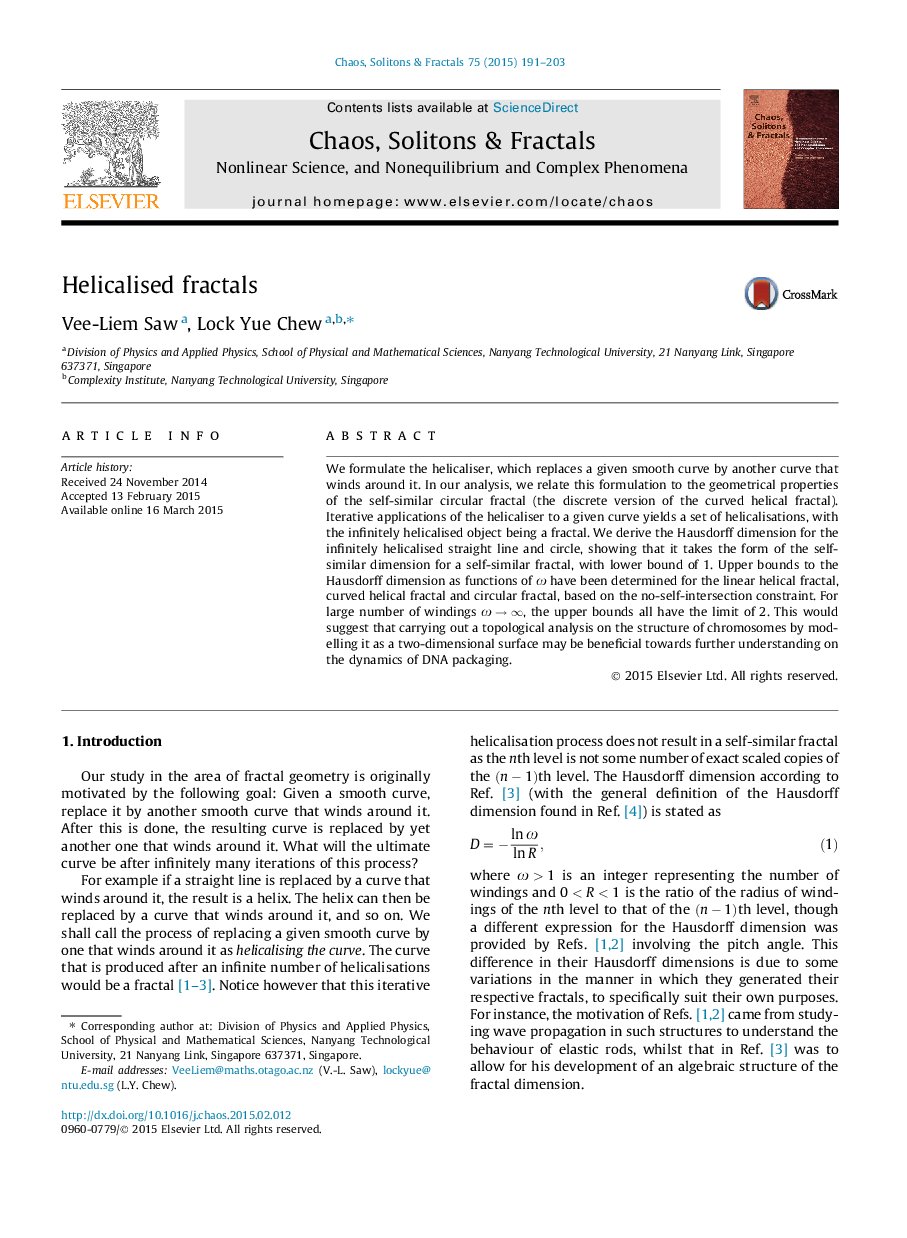| Article ID | Journal | Published Year | Pages | File Type |
|---|---|---|---|---|
| 8254941 | Chaos, Solitons & Fractals | 2015 | 13 Pages |
Abstract
We formulate the helicaliser, which replaces a given smooth curve by another curve that winds around it. In our analysis, we relate this formulation to the geometrical properties of the self-similar circular fractal (the discrete version of the curved helical fractal). Iterative applications of the helicaliser to a given curve yields a set of helicalisations, with the infinitely helicalised object being a fractal. We derive the Hausdorff dimension for the infinitely helicalised straight line and circle, showing that it takes the form of the self-similar dimension for a self-similar fractal, with lower bound of 1. Upper bounds to the Hausdorff dimension as functions of Ï have been determined for the linear helical fractal, curved helical fractal and circular fractal, based on the no-self-intersection constraint. For large number of windings Ïââ, the upper bounds all have the limit of 2. This would suggest that carrying out a topological analysis on the structure of chromosomes by modelling it as a two-dimensional surface may be beneficial towards further understanding on the dynamics of DNA packaging.
Related Topics
Physical Sciences and Engineering
Physics and Astronomy
Statistical and Nonlinear Physics
Authors
Vee-Liem Saw, Lock Yue Chew,
